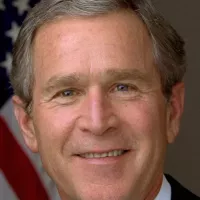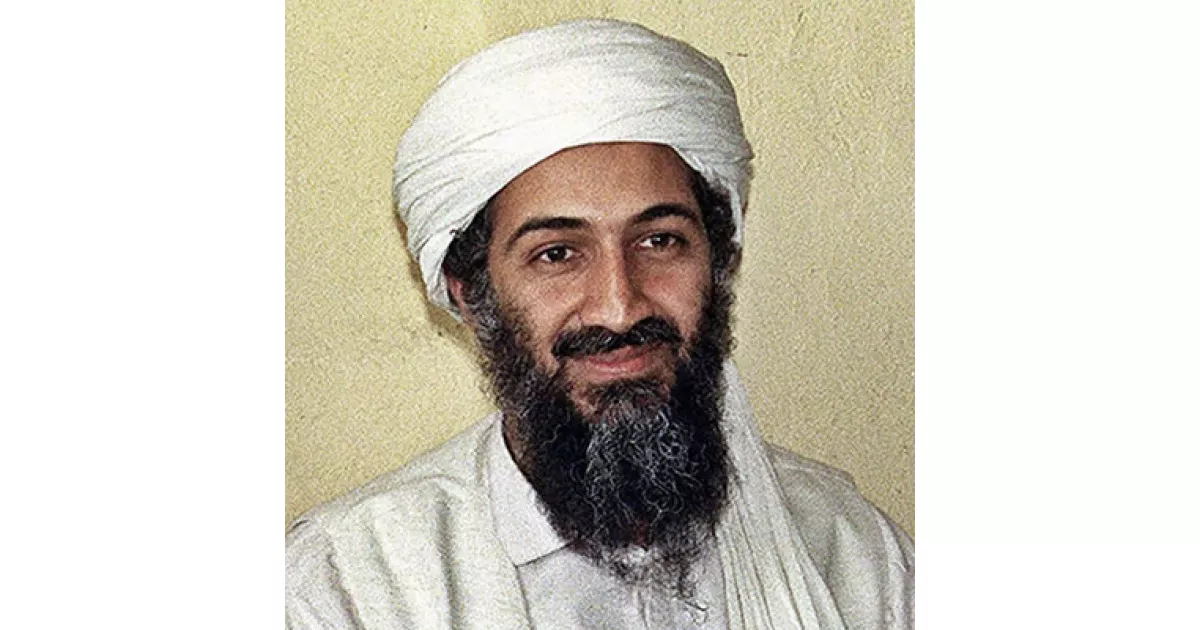Discover the defining moments in the early life of Osama bin Laden. From birth to education, explore key events.
Osama bin Laden was the founder and leader of al-Qaeda, a militant organization. He fought against the Soviet Union in Afghanistan and supported Bosnian mujahideen. Bin Laden opposed U.S. foreign policy in the Middle East, declaring war on the United States in 1996. He orchestrated and supervised the September 11 attacks in 2001, which targeted U.S. assets and resulted in significant casualties, solidifying his role as a key figure in global terrorism.
March 1957: Osama bin Laden Born in Riyadh
On 10 March 1957, Osama bin Laden was born in Riyadh, Saudi Arabia, to Muhammad bin Ladin, a billionaire construction magnate, and Hamida al-Attas.
1967: Death of Mohammed bin Ladin
In 1967, Mohammed bin Ladin, Osama bin Laden's father, died in an airplane crash in Saudi Arabia.
1968: Attended Al-Thager Model School
From 1968, Osama bin Laden attended the elite Al-Thager Model School.
1974: Married Najwa Ghanem
In 1974, at age 17, Osama bin Laden married Najwa Ghanem in Latakia, Syria.
1976: Finished Attending Al-Thager Model School
Until 1976, Osama bin Laden attended the elite Al-Thager Model School.
1979: Potentially earned a degree in civil engineering
In 1979, Osama bin Laden may have earned a degree in civil engineering at King Abdulaziz University.
1981: Potentially earned a degree in public administration
In 1981, Osama bin Laden may have earned a degree in public administration at King Abdulaziz University.
1983: Married Khadijah Sharif
In 1983, Osama bin Laden married Khadijah Sharif, who he later divorced in the 1990s.
1985: Married Khairiah Sabar
In 1985, Osama bin Laden married Khairiah Sabar.
1987: Married Siham Sabar
In 1987, Osama bin Laden married Siham Sabar.
1988: Death of Salem bin Laden
In 1988, Salem bin Laden, Osama bin Laden's eldest half-brother, died in a plane crash in the U.S.
February 1989: Bin Laden's Return to Saudi Arabia
In February 1989, following the Soviet Union's withdrawal from Afghanistan, Bin Laden returned to Saudi Arabia and was regarded as a hero of jihad. He then engaged in opposition movements against the Saudi monarchy.
March 1989: Battle of Jalalabad
In March 1989, Bin Laden led 800 Arab foreign fighters during the unsuccessful Battle of Jalalabad, where he personally led his men to immobilize the 7th Sarandoy Regiment, resulting in massive casualties.
August 1990: Iraqi Invasion of Kuwait and Bin Laden's Offer to Defend Saudi Arabia
In August 1990, following Iraq's invasion of Kuwait, Bin Laden met with King Fahd and Defense Minister Sultan, offering his Arab legion to defend Saudi Arabia instead of relying on non-Muslim assistance from the U.S. His offer was declined.
1990: Bin Laden Funds Afghan Coup Attempt
In 1990, Bin Laden funded the Afghan coup d'état attempt led by General Shahnawaz Tanai, a hardcore communist. He also lobbied the Parliament of Pakistan to carry out an unsuccessful motion of no confidence against Prime Minister Benazir Bhutto.
1990: President Bush's Assurance to King Fahd
In 1990, President George H. W. Bush assured King Fahd that U.S. forces would withdraw from Saudi Arabia once the Iraqi threat was dealt with. However, by 1996, the Americans were still there.
1991: Bin Laden's Criticism and House Arrest
In 1991, Bin Laden publicly criticized Saudi dependence on U.S. forces, leading to his house arrest and eventual forced departure from the country. The U.S. 82nd Airborne Division was deployed in Dhahran.
1991: Expulsion from Saudi Arabia
In 1991, Bin Laden was expelled from Saudi Arabia after repeatedly criticizing the alliance with the United States. He and his followers moved to Afghanistan.
April 1992: Pacifying Role in Afghanistan Civil War
In March–April 1992, Bin Laden tried to play a pacifying role in the escalating civil war in Afghanistan, by urging warlord Gulbuddin Hekmatyar to join the mujahideen leaders negotiating a coalition government instead of trying to conquer Kabul.
1994: Loss of Saudi Citizenship and Stipend
In 1994, King Fahd of Saudi Arabia stripped Bin Laden of his Saudi citizenship and persuaded his family to cut off his $7 million a year stipend due to Bin Laden's continued criticism of the Saudi monarchy.
May 1996: Bin Laden's Expulsion to Afghanistan
On May 18, 1996, due to increasing pressure on Sudan, Bin Laden was permitted to leave for Jalalabad, Afghanistan, where he developed a close relationship with Mullah Omar. The expulsion significantly weakened Bin Laden and his organization.
1997: Nasser al-Bahri Becomes Bin Laden's Bodyguard
From 1997, Nasser al-Bahri was Bin Laden's personal bodyguard.
2000: Married Amal al-Sadah
In 2000, Osama bin Laden married Amal al-Sadah.
2001: Nasser al-Bahri was Bin Laden's Bodyguard
Until 2001, Nasser al-Bahri was Bin Laden's personal bodyguard.
2006: Alleged Imprisonment by ISI
According to Seymour M. Hersh, in 2006, Bin Laden had been a prisoner of the ISI at the Abbottabad compound.
March 2012: Pakistani Report on Movements
On 29 March 2012, Pakistani newspaper Dawn acquired a report produced by Pakistani security officials, based on interrogation of his three surviving wives, that detailed Bin Laden's movements while living underground in Pakistan.
Mentioned in this timeline
TikTok also known as Douyin in China is a social...

Bill Clinton the nd U S President - served as...

George W Bush the rd U S President - is...

Barack Obama the th U S President - was the...
Saudi Arabia officially the Kingdom of Saudi Arabia KSA is...
Sudan officially the Republic of the Sudan is a country...
Trending

2 months ago Cuomo rebuked after Mamdani-Vance 9/11 remark sparks controversy; Mamdani responds to Islamophobia claims.

2 months ago [TO_BE_ADDED_BY_AI]

Microsoft an American multinational technology corporation headquartered in Redmond Washington was founded in It gained prominence with its Windows operating...
3 months ago Colorado I-70 Traffic Gridlock: Georgetown Reopens After Leaf-Peeping Blockade and Delays.
2 months ago Jason Clarke stars in 'The Last Frontier,' an Alaskan adventure series on Apple TV+.

1 month ago Ubisoft's Anno 117 includes AI art placeholder; Fans react negatively.
Popular

XXXTentacion born Jahseh Dwayne Ricardo Onfroy was a controversial yet...

Ben Shapiro is a prominent American conservative political commentator media...

Candace Owens is an American conservative political commentator and author...

William Franklin Graham III commonly known as Franklin Graham is...

Tucker Carlson is an American conservative political commentator known for...
The Kennedy Center Honors are annual awards recognizing individuals and...
